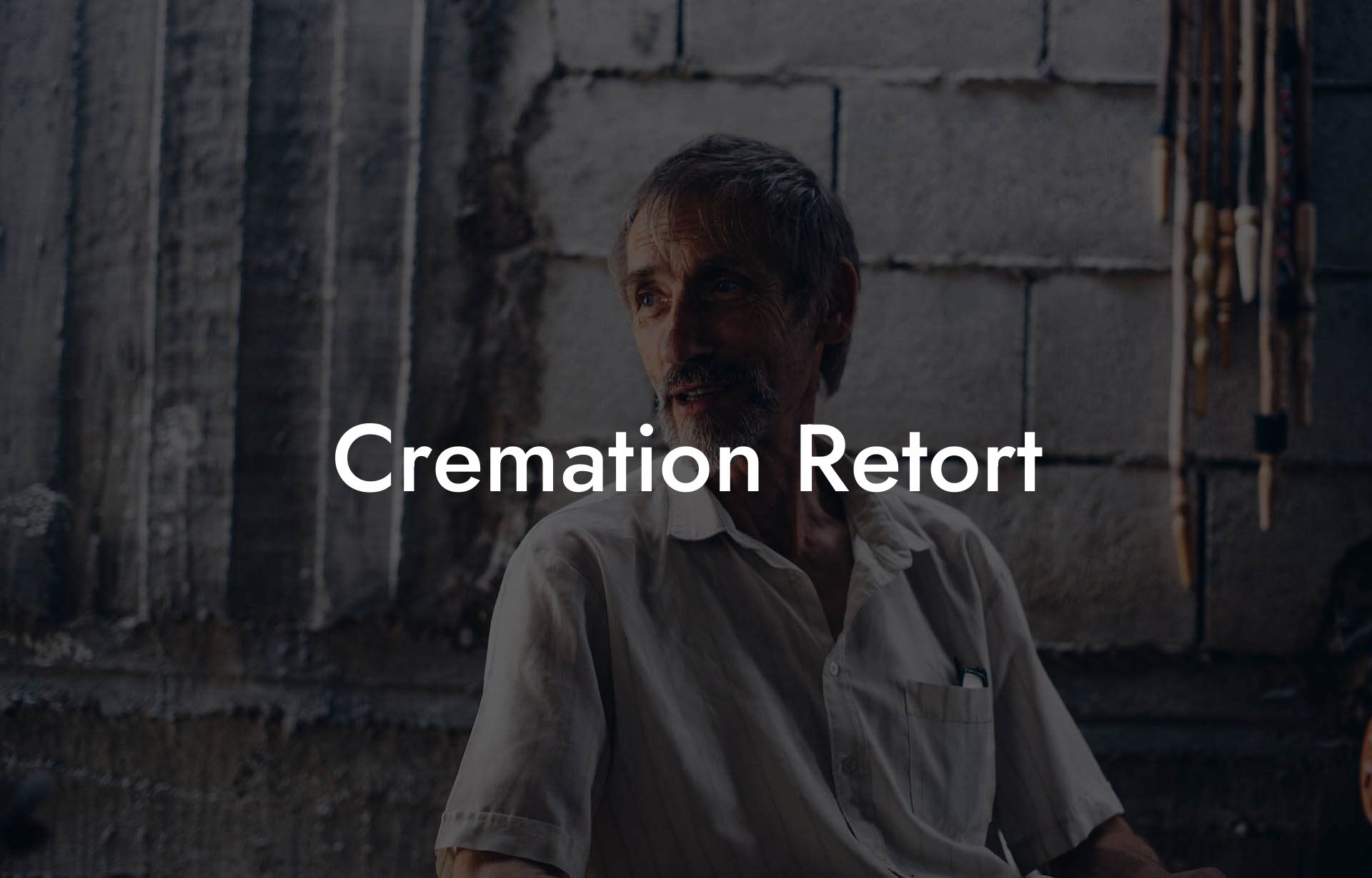Imagine a world where the passing of a loved one is met with a sense of reverence, respect, and environmental responsibility. Welcome to the world of cremation, where the traditional funeral industry is being transformed by innovative, eco-friendly, and personalized approaches to saying goodbye.
Quick Links to Useful Sections
What is a Cremation Retort?
A cremation retort is a specialized furnace designed to reduce human remains to their basic elements through high-temperature combustion. Also known as a cremator, this device is the heart of the cremation process, providing a dignified and efficient way to honor the deceased.
The cremation retort is typically a large, insulated chamber made of heat-resistant materials like refractory ceramics or steel. Inside, the body is placed in a coffin or container, and the temperature is raised to around 1400°C (2550°F) using natural gas, propane, or electricity. This intense heat breaks down the body into bone fragments, which are then processed into the ashes that families receive.
The Evolution of Cremation: A Shift Toward Sustainability
As the world grapples with climate change, environmental degradation, and resource depletion, the funeral industry is undergoing a significant transformation. Cremation, once seen as a fringe option, is now becoming the preferred choice for many due to its eco-friendly credentials.
Traditional burials, with their resource-intensive caskets, embalming chemicals, and land use, are being replaced by cremation's more sustainable approach. Cremation requires minimal land use, reduces greenhouse gas emissions, and conserves natural resources. It's a shift that resonates with the values of environmentally conscious Gen-Z and millennials.
Types of Cremation Retorts: A Guide to Modern Technology
The cremation retort has come a long way since its inception. Modern technology has led to the development of various types of retorts, each with its unique features and benefits.
- Gas-fired retorts: These traditional retorts use natural gas or propane to fuel the cremation process. They're widely used and offer a high level of control over the cremation process.
- Electric retorts: Electric retorts use electricity to heat the chamber, providing a cleaner, more efficient, and environmentally friendly option. They're gaining popularity due to their reduced carbon footprint.
- Alkaline hydrolysis retorts: Also known as water cremation or resomation, this process uses a water-based solution to break down the body. It's a more eco-friendly option, producing only bone fragments, water, and a small amount of energy.
Each type of retort has its advantages and disadvantages, and the choice ultimately depends on the crematorium's specific needs and the families they serve.
The Role of Cremation Retorts in Modern Funeral Practices
The cremation retort is a critical component of modern funeral practices, enabling families to say goodbye to their loved ones in a dignified, personalized, and environmentally responsible manner.
With the rise of cremation, funeral homes and crematories are adapting to meet the changing needs of families. This includes offering personalized cremation services, such as witnessing the cremation process, holding memorial services, and providing unique urn options.
The cremation retort is at the heart of this shift, providing a reliable, efficient, and respectful way to care for the deceased. It's a testament to the funeral industry's ability to evolve and innovate in response to changing societal values and environmental concerns.
Cremation Retort FAQs: Your Questions Answered
Here are some frequently asked questions about cremation retorts and the cremation process:
1. How does a cremation retort work?
A cremation retort uses high-temperature combustion to reduce the body to its basic elements, producing bone fragments and ashes.
2. Is cremation more environmentally friendly than traditional burial?
Yes, cremation is generally considered a more eco-friendly option due to its reduced land use, lower greenhouse gas emissions, and conservation of natural resources.
3. What happens to the ashes after cremation?
The ashes are processed into a fine powder and returned to the family in an urn. They can be kept, scattered, or buried in a memorial garden or cemetery.
4. Can I witness the cremation process?
Yes, many crematories offer witnessing options, allowing families to be present during the cremation process.
5. Are cremation retorts safe?
Modern cremation retorts are designed with safety in mind, featuring advanced temperature control systems, ventilation systems, and operator training programs to ensure a safe and respectful cremation process.
Resources and Community Support: Your Next Steps
If you're considering cremation or would like to learn more about the process, here are some resources and community support options to help you on your journey:
- Cremation associations and organizations: Look for local and national associations that provide information, resources, and support for those considering cremation.
- Online forums and support groups: Join online communities and forums where you can connect with others who have experienced loss and are navigating the cremation process.
- Funeral homes and crematories: Reach out to local funeral homes and crematories to ask questions, schedule a tour, or learn more about their services and options.
Remember, you're not alone in this journey. Seek out support, ask questions, and take the time to understand the cremation process and its many benefits.

